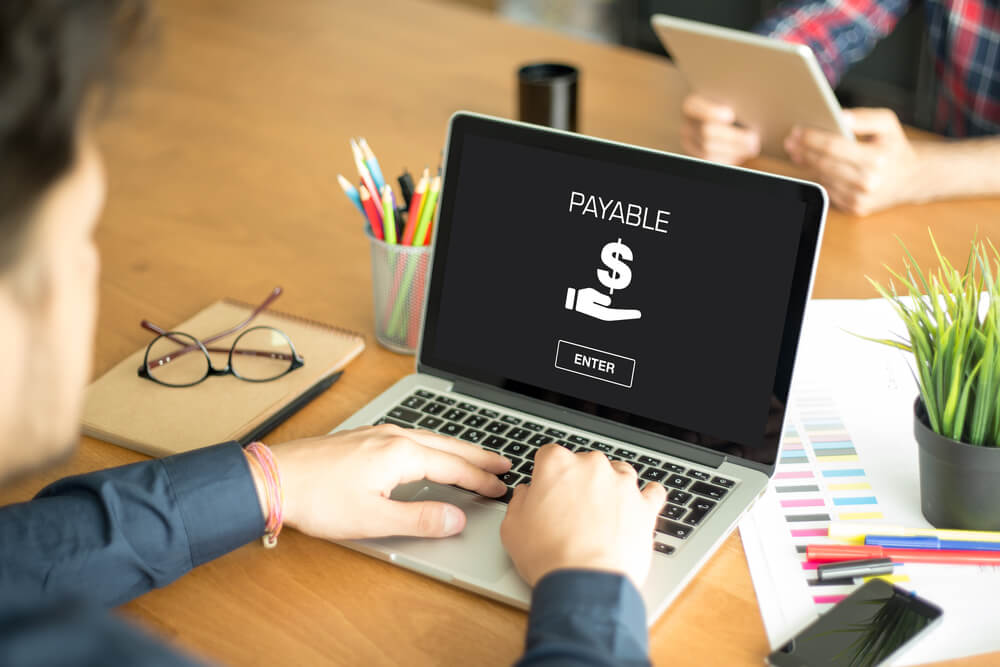Burn rate is the rate at which a company is spending its capital. It’s a valuable metric for those in the startup world because it shows how quickly a company is depleting its cash reserves.
This number is significant because it shows how fast a company is burning through its funding. If a company burns more than it makes, it will eventually run out of money and shut down.
Burn rate is a key metrics in your startup’s life cycle. It tells you how fast your company is burning through the capital.
Burn rate helps you understand how soon you can expect to reach cash-flow break-even when refinancing will be needed and what impact your decisions will have on future cash flow.
Table of Contents
ToggleWhat is Burn Rate?
Burn rate is a metric used by startups and small businesses to track how much cash they’re burning through each month. As the name suggests, it measures how quickly the company is draining its bank account or other sources of funding (e.g., credit cards).
Burn rate is calculated by taking your monthly expenses and dividing them by the number of months until you run out of cash. For example, if a company has $1 million in monthly costs and 12 months of runway left, its burn rate is $83,333 per month ($1 million / 12 months).
Why does this matter? Because it tells founders how much time they have left in terms of cash before they need to raise more funding or shut down their business.
The first step toward improving your burn rate is understanding precisely what it is — and why it matters so much to your startup’s future success or failure
Who Needs to Worry About Burn Rate?
The term burn rate has come to be associated with startups. High burn rates can cause problems for small businesses, especially those relying on venture capital funding.
Venture capital firms typically want to see their investments turn into profitable companies within five years, so they tend to invest in businesses with low or moderate burn rates.
High burn rates can also cause problems for startups because they don’t have much room for error regarding cash flow management — if something unexpected happens, such as an employee quitting or losing an important client. There may not be enough money to cover unforeseen costs without debt.
Burn rate is a critical metric for three types of businesses:
Startups With Venture Capital Funding
If your startup is funded by venture capital, you should be very concerned about the burn rate. This is because venture capitalists expect their money to be used wisely. If you’re burning through capital too quickly, it puts pressure on your company to hit product-market fit and earn revenue as soon as possible.
In addition, venture capitalists expect a return on their investment within ten years. If you’re spending too much money and not bringing in enough, it can be challenging to show them a path toward profitability. In some cases, they may even ask for an exit before you’ve reached that point.
Taking all of this into account, it’s important for startups with VC funding to track their burn rate carefully. They need to know how much they’re spending each month and how long they have until their next funding round arrives.
They also need to know how much cash they’ll have left when the current round runs out — so they can decide whether or not to raise more money from investors or try another source of financing (such as debt).
New Companies Getting Started
Burn rate is significant for startups that have just launched their products or services and have yet to generate revenue. These companies often spend heavily on marketing, sales, and other expenses trying to find and retain customers.
As long as these expenses are temporary, these startups still have plenty of time before they run out of cash — so long as they can show positive signs that their business models are working and leading them toward profitability.
New companies getting started often have high burn rates because they lack the revenue or profits needed to sustain their operations without external funding sources like venture capital or loans from friends and family members.
In that situation, an early-stage startup should focus on reducing its burn rate as much as possible to conserve precious capital for later stages when it needs it more urgently to grow quickly enough to survive the competition and evolve into a sustainable business model.
Established Businesses Borrowing Money
Burn rate can be an essential metric for companies raising money from investors, but it’s also useful for established businesses borrowing money.
If you’re an established business and take out a loan, you’ll probably be required to provide financials to your lender. That’s because the lender wants assurance that you can repay the loan.
The lender usually looks at your cash flow and burn rate (how much cash you spend each month) to determine whether you can repay the loan. If your burn rate is too high and you don’t have enough money, the lender might not lend you money.
If you’re not sure how much money you’ll need in the future, it’s essential to know how quickly your burn rate is growing to figure out when you’ll run out of cash and have trouble paying back what you owe.
Importance of Metric in Venture Capital (VC)
Burn rate is a critical metric in the venture capital (VC) business. It’s a ratio that shows how much cash a startup spends every month. VCs use this metric to determine whether they should invest in a startup and, if so, at what valuation and terms. If you’re looking for funding, it’s essential to know how much money you’ll need to get off the ground and how quickly you need to raise it.
In the VC industry, investors usually want to know everything about your business — from how many customers you have to how many people are using your product each day.
They want to know everything about your financials, too — how much money you’ve raised from investors, how much cash you’re burning through each month, etc.
That’s why startups need to be prepared with these types of metrics when they present their businesses to investors for funding.
VCs use burn rate to assess whether a startup has the potential to succeed or not. The specific number used for this calculation varies depending on what type of VC firm you are dealing with. If your startup has a higher burn rate than their internal benchmarks, it may be too early for investment because you won’t have enough money to scale up your business operations once you’ve reached profitability.
Burn rates are significant for startups because they indicate how long an entrepreneur thinks their company will last before running out of cash. The higher the burn rate, the faster that company may need additional capital — which could be obtained through another round of financing or other sources such as grants.
What Are the Implications of a High Burn Rate?
Burn rate is the amount of cash a company spends per month. It’s essential to track burn rate because it tells you how long your company can survive if it doesn’t receive additional funding.
Burn rates are often used in business planning and fundraising, but they can also understand how much money you need to keep your business running.
The burn rate is all about cash flow, so if you have a high burn rate and no new money coming in, you’ll eventually run out of funding and shut down.
If your burn rate is high, it can be difficult to predict when you’ll run out of cash. Companies like Amazon, which has historically operated with a high burn rate, keep their cash balance high to keep themselves from getting in trouble.
The primary implication of a high burn rate is that it makes it harder for startups to raise additional funding because investors are more likely to be concerned about short-term profitability rather than long-term growth potential. Here are some more of the potential implications:
Cash Flow. The speed at which you’re spending money will determine how many months you have to fund your company before you need to raise additional capital. Suppose you need to raise money in less than six months. In that case, it’s unlikely that investors will be interested in providing the funding because they don’t want to enter into an investment without knowing how long their money will be tied up in your business.
Credit Lines. Suppose you use credit lines (i.e., credit cards, line of credits, etc.) for working capital. High burn rates may lead to increased interest expense and penalties for late payments, which could ultimately hurt your ability to secure additional money if there isn’t enough cash flow from operations to pay off those debts.
Existing Investors. High burn rates may cause existing investors and lenders to question whether they should continue investing more money or extend more credit lines to your company — especially if they already have concerns about its financial health due to poor performance or low sales volumes.
Top Talent. High burn rates can also make it difficult for companies with high burn rates to hire top talent because potential employees may feel that they might think that the company won’t be able to afford their salary demands or their equity will be worthless when the company shuts down.
Gross Burn Rate vs. Net Burn Rate
The gross burn rate is the total amount of money spent per month on expenses, including salaries, rent, and other costs. It includes:
Your monthly expenses — rent, utilities, payroll, etc.
Cost of goods sold (COGS) — this is your inventory or the number of units you produce and sell each month. If you’re selling products or services, COGS is the cost of creating or delivering those services.
The net burn rate is the money left to cover all expenses, including salaries. The net burn rate is also the gross burn rate minus cash inflow from clients, investors, or partners.
This number represents how much money you need to raise each month or quarter to stay alive — or how much money it costs to run your company per month or quarter before generating any revenue.
The Gross burn rate helps understand how much money a startup is spending. It can also indicate if your company has enough capital to support its current level of operations. However, the gross burn rate is not a good measure of profitability because it doesn’t include revenue or other income sources.
Net burn rate gives you a better idea of how long your company will be able to sustain itself before running out of cash. If your business is profitable and has positive cash flow, your net burn rate should be zero or negative.
How to Calculate Gross Burn Rate
The gross burn rate is the total monthly cost of operating the business, including rent, payroll, and marketing. It’s one of the most critical metrics for SaaS companies.
The gross burn rate is calculated by adding up all the expected expenses in a given month and dividing them by the number of months remaining until you achieve your break-even point. The gross burn rate calculation requires two values: your monthly operating expenses and starting capital or total cash.
For example, if your company has $3,500 in expenses per month and you funded your business with a $50,000 loan, then calculate the gross burn rate:
- Add up all your monthly payments (salaries, office rent, customer support, etc.).
- Divide by the amount of your money you’re funded your business
$3,500 / $50,000 = 0.07
Multiply by 100, and you get 7%. So, your monthly burn rate is 7%. Every month in business, you spend 7% of your initial investment.
The equation for it is:
Gross Burn Rate (%) = Monthly Operating Expenses / Starting Capital x 100
How to Calculate Net Burn Rate
Calculating your net burn rate is just as important as calculating your gross burn rate. It’s an indicator of how much runway you have left in your bank account, and it helps you make smarter decisions about the future of your business.
The net burn rate is calculated by first subtracting all revenue from the total amount of money spent over some time. This figure represents how much money was spent on operational expenses like payroll and marketing during that period.
The formula for calculating net burn rate percentage is:
Net Burn Rate (%) = (Revenue – Operating Expenses) / Starting Capital x 100
Let’s take an example. You own a store, and you’re earning revenue but still spending $3,500 a month, and last month you only made $2,000. You also invested $50,000 capital in starting your business. Your net burn rate, in this case, would be:
($2,000 – $3,500) / $50,000 = 0.03
Multiply the result by 100, and you get a net burn rate of 3%.
How to Reduce Burn Rate
If you’re running a startup, you know that burn rate is one of the most critical metrics. Your burn rate is how much money you spend each month, and it’s usually measured in dollars per month or dollars per week.
If your burn rate is too high, you won’t have enough money to make payroll or pay for other expenses like office space. If your burn rate is too low, you might be spending less than you need to run a profitable business.
A high burn rate can be disastrous for any company. It means that they’re spending more than they’re earning and burning through their cash reserves at an unsustainable pace.
However, there are ways to reduce your burn rate without sacrificing growth.
Re-evaluate Your Recurring Costs
If you have monthly or annual recurring costs, such as hosting fees or software licenses, it’s good to re-evaluate those costs every three months.
You might not need all the features they offer, so consider switching to less expensive alternatives or reducing the number of users who need access.
The same goes for services like accounting software — if you don’t use all its features and only use it once a year to file taxes, find something cheaper that works just as well (or better).
Layoffs and Pay Cuts
To reduce your burn rate, you need to cut costs. The first place to look is at the payroll. If you have an underperforming staff or aren’t utilizing them properly, it’s time to let them go. Don’t be afraid of making the tough call — sometimes it’s better to let someone go than keep them around and pay them for their lack of contribution.
Layoffs can be sensitive, but they can also help reduce your burn rate by removing employees who aren’t contributing as much as they should. If you have a team of 10 developers who are only working on one product, you could potentially replace them with five developers working on two products.
Another way to reduce your burn rate is by cutting salaries. This can be a difficult decision as it often involves reducing the wages of your most senior employees. Still, if you can’t afford these salaries anymore, you have no choice but to make cuts. Pay cuts can also help reduce your burn rate if you can cut other expenses along with it.
For example, if you had five developers working full-time at $100k each, and you were able to cut their salaries down to $80k each while keeping their hours the same, that would save your company $200k per year without reducing the number of hours worked or the quality of the work product.
Marketing (Sales Fixes All)
Marketing is the only thing that will help you grow your sales enough to reduce your burn rate. This isn’t suggesting that you throw money at the problem, but rather thoughtfully drive revenue through marketing.
This could mean hiring amazing salespeople and incentivizing them properly. Other ideas like focusing on driving down your CAC and initiating growth hacks that are free or low cost to drive high-value sales and so on.
Look For Additional Funding
Consider looking for additional funding if your burn rate is high and your revenue isn’t keeping pace.
You might be able to find angel investors or venture capital investors willing to invest in your business early if they believe they can make a return on their investment by helping you grow faster than you could on your own.
The key is finding someone with experience working with startups like yours — someone who understands the risks involved and can advise you on how to avoid common pitfalls.
Manage Your Burn Rate and Survive
Burn rate is the amount of money you spend each month. It’s the cash flow you need to grow and run your business, and it’s a critical metric for any entrepreneur.
This may seem obvious: You need to spend money to make money. But it’s essential to understand how much you’re spending and how you can reduce the burn rate to plan for growth and know when to stop spending.
Ultimately, reducing your burn rate requires an exceptional understanding of your team’s assets. Please keep track of the various assets you have at your disposal and where they are.
By identifying opportunities for cross-departmental resource sharing and strategic cost-cutting, it will be easier to keep a handle on your startup’s finances. It may not happen overnight, but by being proactive, you can better avoid asking for large sums of money before running out completely.




No comment yet, add your voice below!